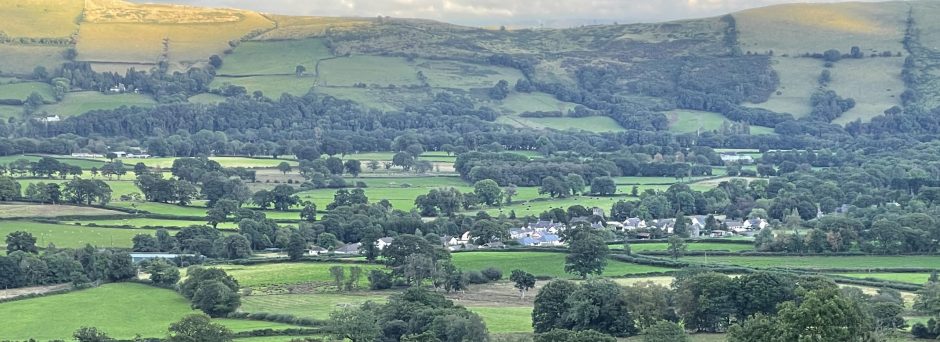Nature notes
by James Iliff
Spring 2003
Rain said to be coming tomorrow at last. What an extraordinary Spring. Lovely, but what a waste! We’ve had nearly 3 weeks calm sunshine. Very little chance of any summer now. Another anticyclone like this within the next few months too much to hope for.
One or two snowdrops still left. Their flowering season has been extraordinarily long this year: some, under a west-facing bank, began in late January; others just finishing now. The wild daffodils are spreading quite insanely: the new little seedlings are like grass, and it’s impossible to walk through them without treading on them. The crocuses made a wonderful mauve carpet in February. They spread too. The primroses are coming into flower no, and the blackthorn started this week- No violets yet-The first frogs in the pond in January. Here is an interesting thing. We have two small ponds. One, to the east, has run-off with some lime in it from the adjoining meadow, and there are snails in it. The other, on the west side, is acid, with a peat margin, and no snails. The frogs use both, crossing from one to the other (to the cat’s fascination) but only lay spawn in the acid, westerly one. I was advised: “frogs aren’t daft; they know snails will eat the spawn”. In February there were often getting on for a hundred frogs at once with a noise like an endless coffee-grinder; first spawn in the second week. The tadpoles are wriggling now.
The thrush arrived in early February as usual (Feb. 7th) but very soon disappeared far up the valley. We hear him in the distance now. He seems to be becoming a wild woodland bird. The spotted woodpecker has been regularly at the peanuts!
November 2002
After this November rain there has been a sudden outbreak of Parasol mushrooms. They always come in the same place in the corner of the next-door field just across our fence. The reference book says “open woods & pastures” and also “uncommon”. This seems odd because we have always known them there. I have checked very carefully, and there can be no doubt these are the real thing (there seem to be a lot of others closely related): large, off-white with brownish flecks peeling away on the cap, and a large delicate white ring on the stem; very upright, elegant and symmetrical. We have already had two meals off them this year, very sweet and tasty with bacon. We always leave a few bits to drop spores for next year. I don’t know whether this makes any difference; I suspect the underground strands are there in the earth all the time.
One day, years ago, we caught sight of our neighbour nicking Parasols and looking up at our windows. Afterwards, when we met him, he said to us (rather guiltily we thought), “Did you know there are Parasols in the field just by your house ?”(…. !!)
The hazel leaves are almost all gone by now -just a few yellow ones still on the twigs (turning red-brown on the ground). Hawthorn and ash the same. Alder is an odd tree: the leaves stay green till ready to fall and then suddenly are not there. No sign of the alder wilt (virus) around here, luckily. There are lots of catkins on the trees, and lots of seedlings!
As usual the oak leaves are the last to go – most of them are still golden on the trees at the moment. Waiting for the wind!
Very interesting to watch the birds on the peanuts. The chaffinches at first are very clumsy and hesitant about it, but they learn what to do by watching the tits. Evidently all of them were here last year, because this year they have all been quite confident straightaway. The woodpecker has also been at the peanuts. He learned what to do last year as well. None of them dare stay when he comes.
